How to hide pipes in a toilet?
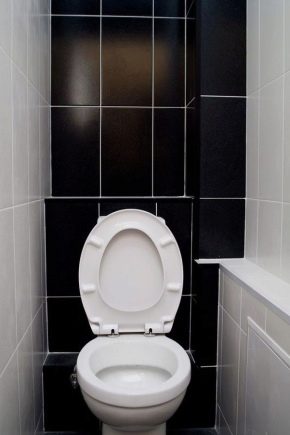
On a relatively modest toilet area, there are always many sewer junctions. Any technical units do not look aesthetically pleasing and give the impression of an unfinished repair. Therefore, the question often arises of how to hide the pipes in the toilet and give the interior an attractive look.
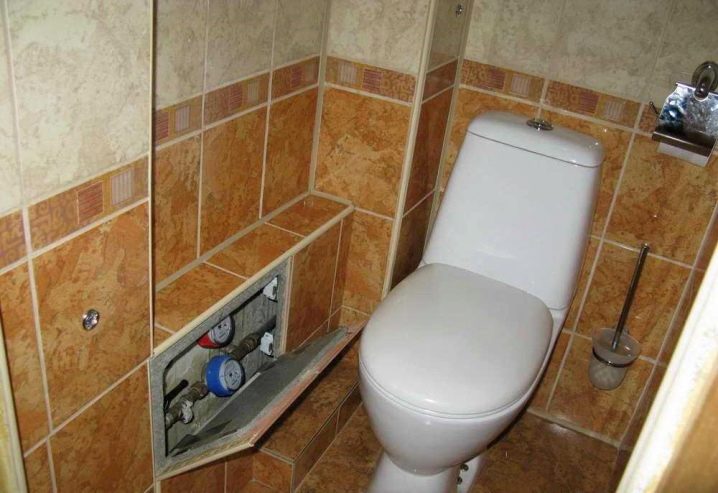
Where to begin?
Before hiding the pipes in the toilet, you need to carefully inspect the riser and other communications for damage, and eliminate them if necessary. It is necessary to start preparing drawings and calculating the material for the future structure after solving all technical issues. For an accurate calculation of raw materials, it is necessary to carefully make all measurements of the area on which the work will be carried out.

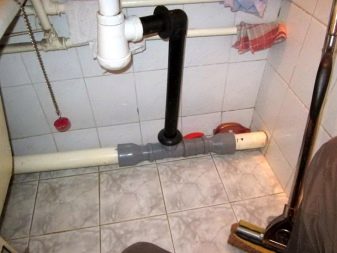
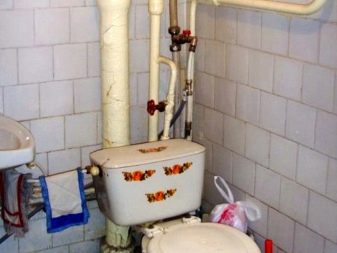
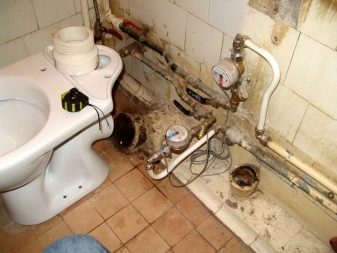
Hardware stores offer a wide variety of finishes, but whatever you have to work with, you will need the following tools:
- screwdrivers;
- drill;
- screwdriver;
- building level and tape measure;
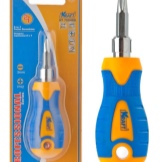



- a saw for plastic or a knife for cutting drywall;
- scissors to cut a metal profile;
- self-tapping screws and fasteners for a profile.

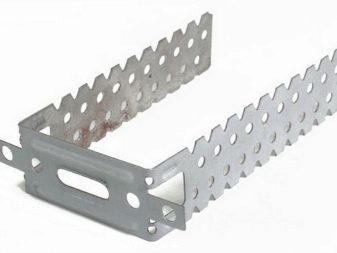
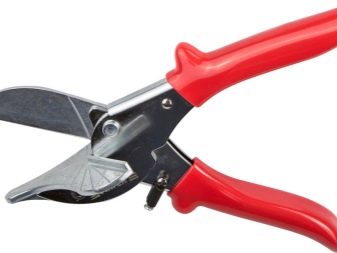

Material selection
If you need to hide communications quickly, PVC panels will be the best choice. It is a cheap and versatile finish. The main thing is to choose a color and pattern that will harmoniously fit into the overall picture of the interior.
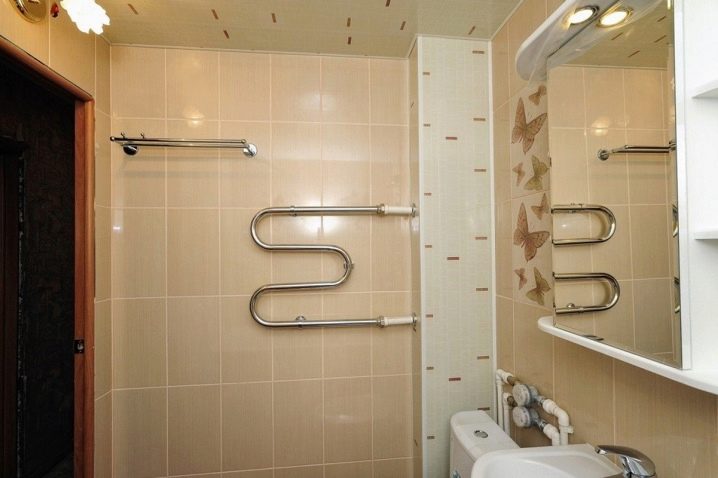
Plastic panels have several advantages:
- safe for health and the environment;
- installation of panels is not difficult;
- installation is possible as soon as possible;
- acceptable price;
- the ability to install a hatch to access meters or places where a leak may appear;
- the ability to create a structure consisting of separate parts;
- no additional finishing required.
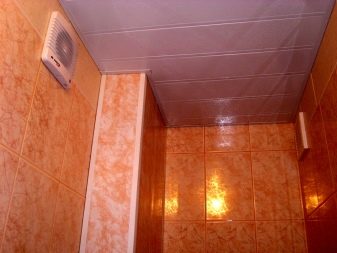
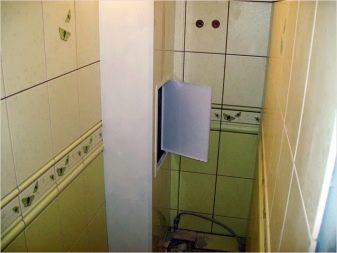
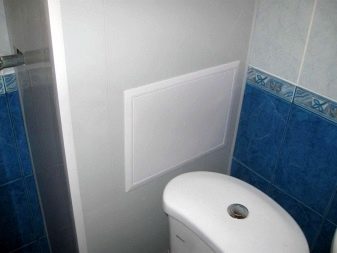

And also quickly and inexpensively you can close the riser with plasterboard. The humidity in the toilet is not as high as in the bathroom, but it is better to use a moisture-resistant type of material.
Drywall has all the benefits of panels. In contrast, this material requires additional finishing. But such a drawback can be regarded as an advantage: drywall without finishing can be used under tiles or any other decorative finish. Thus, the wall behind which the pipes are located will be indistinguishable from other walls in the toilet.
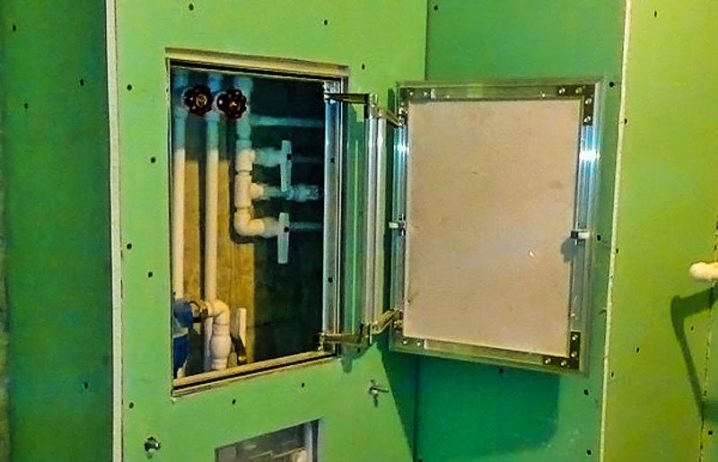
Design options
The design that will hide the communications is selected depending on some factors:
- the size and nature of the direction of the pipes;
- the location of the pipes relative to each other;
- the presence of auxiliary devices and cranes;
- the general environment in the room.
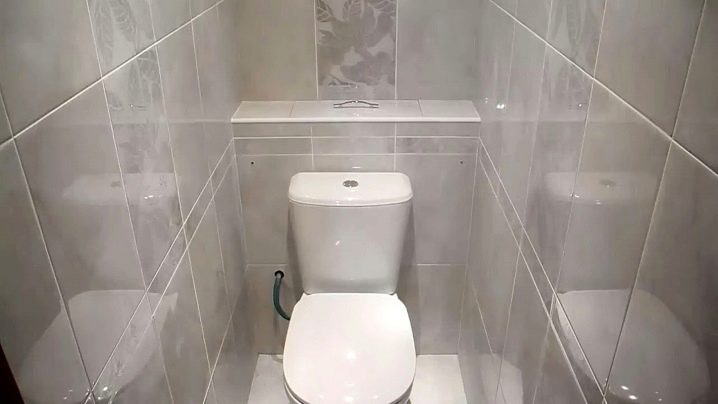
Having analyzed these features, it will be easy to determine the type of future design. The most common are several popular types.
Box
It is a simple design that even a beginner can handle. The frame is created from metal profiles or wooden slats. Next, the base is sheathed with the material that was chosen. Full or partial sheathing is possible, depending on the availability of metering devices or cranes near the riser. In this case, you need to leave the window so that you can access them.

The frame of the box can be sheathed with PVC panels, moisture-resistant plywood or drywall. Drywall is usually decorated with the same materials as the main walls. There are ready-made options for the box. But this option may be more expensive.Making a box yourself, it is possible to immediately take into account all the nuances. While the finished box will have to be adjusted to the desired parameters.
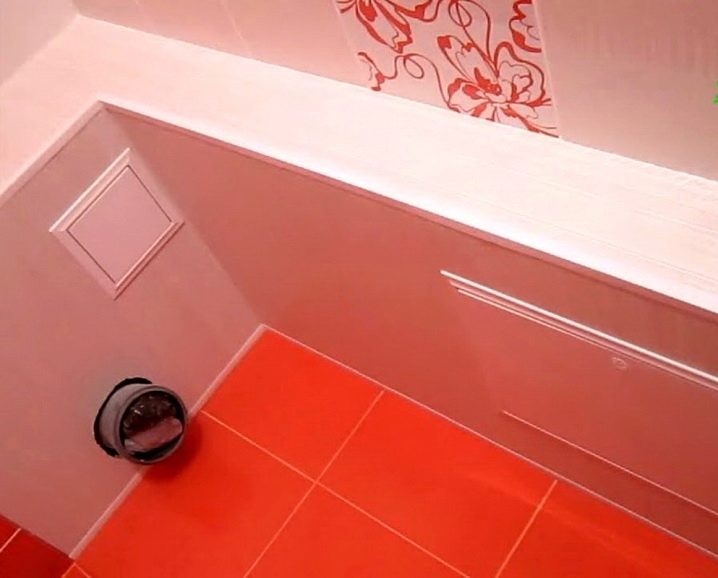
The box design is presented in several configurations.
- False wall. A good solution is to hide several pipes at once located next to each other. It looks aesthetically pleasing, but takes up a lot of space.
- Square. It can be positioned both vertically and horizontally, hiding the fan pipe. Suitable for rooms with pipes in the corner.
- Slanting false wall. The middle version between the previous ones. The structure is attached at an acute angle to the side or rear wall. Just like a false wall, it allows you to hide several pipes, but significantly saves space.
- Multilevel. Installed in the case of a chaotic arrangement of pipes in the toilet. To save space, boxes are created in places where communications are localized.
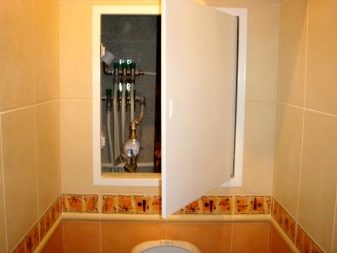
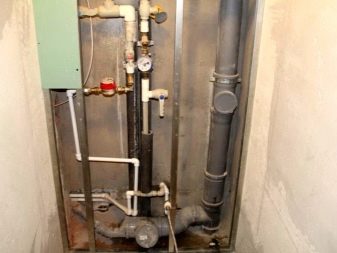
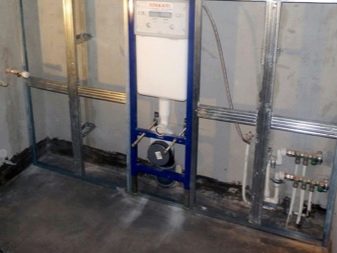
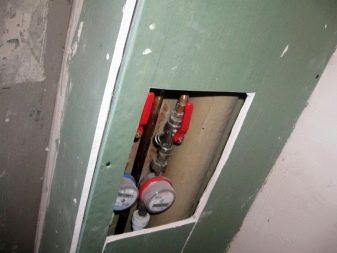
Built-in sanitary cabinet
A structure with doors on the wall behind the toilet is called a sanitary cabinet.
Using this method of camouflage, several problems are solved at once.
- An additional niche appears for shelves where cleaning agents and accessories can be stored.
- The presence of doors does not impede access to meters, filters, manifolds and piping.
- In the event of a pipe break, the cabinet will not impede access to the accident site. Replacing metering devices in a toilet with a sanitary cabinet will not be inconvenient.
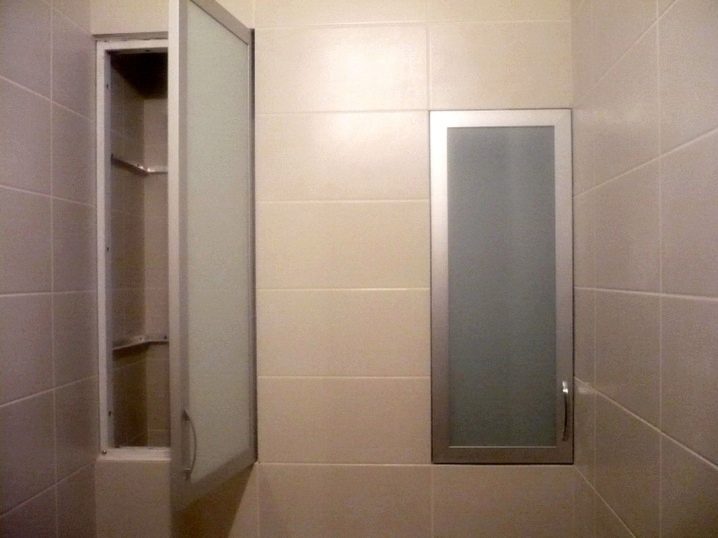
The choice of material for the manufacture of doors is large enough. Plywood, PVC panels, chipboard, metal, wood or glass doors are especially popular. You need to choose a material that will fit into the overall style of the interior. For example, in a toilet decorated with plastic, plastic doors will be appropriate. And for a country wooden house, wooden doors are suitable.
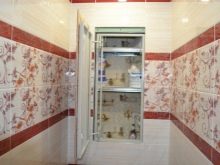
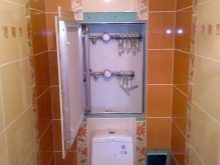
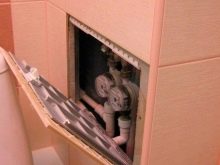
Do not forget about the convenience of the location of the doors in the cabinet. They should be located at a suitable height so as not to obstruct access to the desired pipe junctions. The handles on the doors should also be suitable.

The installation of swing doors in the sanitary cabinet takes place, like any other door, they are fixed on hinges to the base. Ordinary doors are suitable for a spacious toilet. Closer rooms are best equipped with compact accordion doors, sliding models or a curtain.

Concealed installation - shtroblenie
Chamfering is an alternative to decorative types of pipe camouflage. With hidden routing, it is assumed that parts are sewn in specially punched grooves, which are called grooves. Such technological holes are made using a chasing cutter or a perforator. Pipes hidden in the floor screed also belong to the hidden laying. In this case, the wiring is poured with a concrete solution.
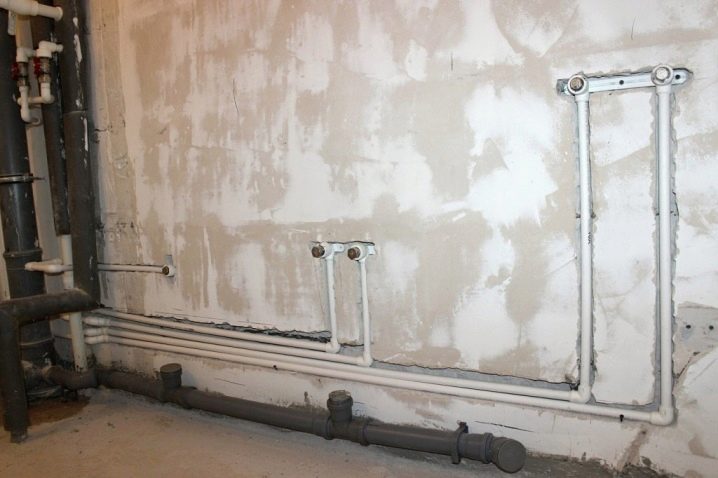
The main advantage of this type of camouflage is its aesthetics. Communications are completely hidden in the wall. Except for the riser, the diameter of which is too large and cannot be embedded in the wall. The advantages include the complete safety of pipes, their damage during hidden installation is impossible. Significant space savings are also a plus.
The weak side of the method is the labor intensity, cost and inaccessibility of pipes. You can sew up the pipes yourself, but you have to study a lot of literature to get everything right. Covert installation is not possible everywhere. The method will be good in private houses built of bricks or solid blocks, as well as in multi-storey buildings with thicker walls. Elsewhere, this method will run counter to SNIPs. The grooves significantly weaken the load-bearing walls, which are already heavily loaded.
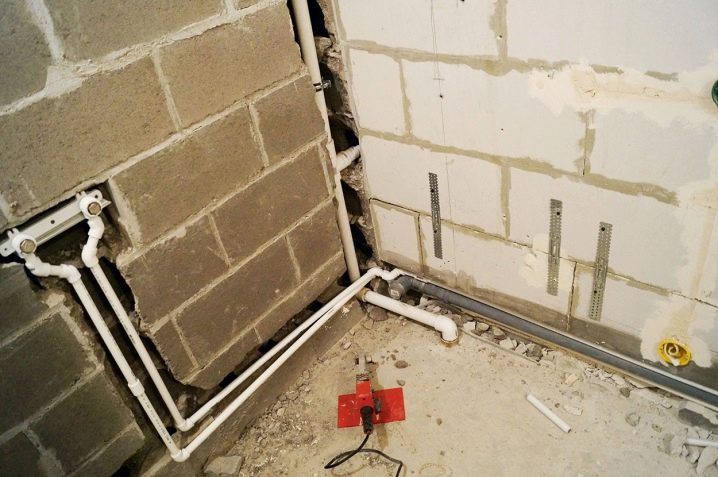
Certain requirements may significantly complicate the installation:
- only one-piece pipes can be sewn up, others need free access;
- in the wall on which work will be carried out, electrical wires should not pass;
- it is necessary to take into account the linear expansion of the pipe material;
- you have to use clamps in order to have good sound insulation.
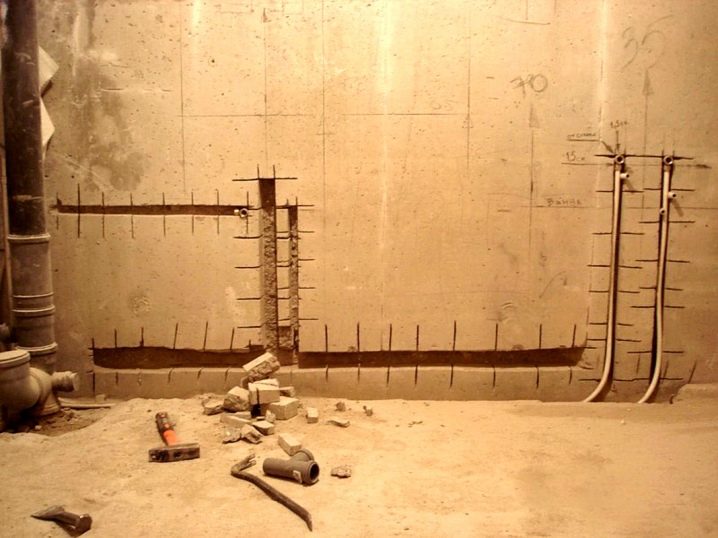
It is recommended to create a detailed drawing before hiding communications using gating. In case of major or emergency repairs, it can come in handy.
We hide beautifully
It is not always convenient to close pipes with auxiliary materials. In some cases, there is not enough space for complex structures, or the time for repairs in the toilet may be limited. Sometimes it is enough to simply decorate the pipes, when we close the communications with a partition, access to them is difficult, and this can cause inconvenience.
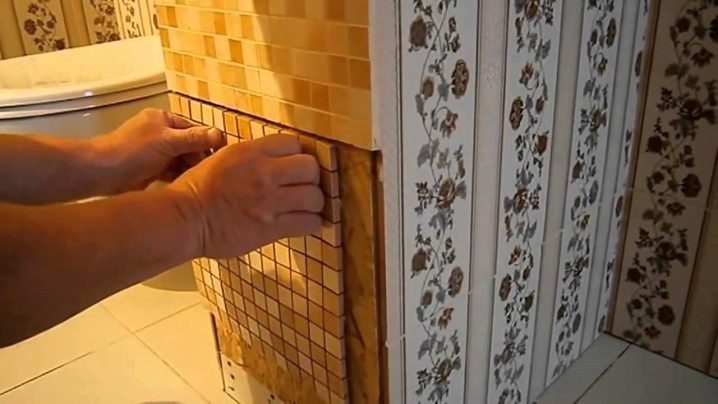
Outdoor placement of communications
The pipes can be left in plain sight and not decorated if they look beautiful on their own. For example, metal communications in combination with plumbing from the same material are perfectly combined and fit into the interior of a loft, techno or hi-tech restroom. In a toilet with such a setting, they will become a source of pride. But such pipes are expensive, in addition, there is a possibility of getting burned.
Therefore, you can beautifully beat ordinary communications:
- cover with paint that matches the general color scheme of the toilet;
- decorate with unusual patterns, while you can use special stencils;
- sheathe with beautiful stones, braid, glass;
- disguise with artificial plants or make the pipes themselves in the form of trees: the toilet will resemble an impenetrable jungle or dense forest;
- glue the pipes with various stickers or stickers;
- if you show your imagination, then you can use material that is usually recycled, for example, metal lids from carbonated drinks, and in addition to the unusual design of pipes, it would be appropriate to make a small panel from the same material.
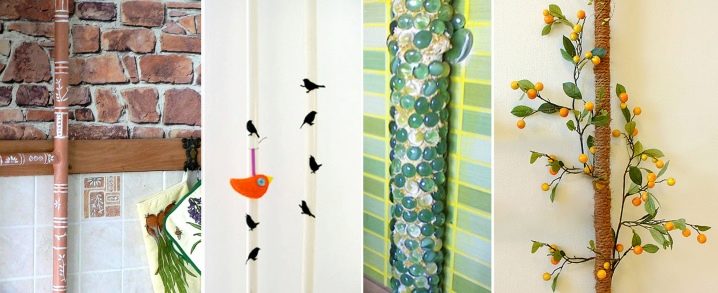
Decorating pipes is a convenient way to hide communications. All parts of the communications are in plain sight, you can always check their condition and, if necessary, make repairs or replacements.
Blinds
The disguise thus resembles a false wall. But it is not a wall that is created, but a curtain. It can be collapsed if necessary.
Blinds advantages:
- by closing the pipes in this way, a lot of time is saved;
- during installation, a lot of garbage is not created;
- the service life of the blinds is long;
- the price is small;
- the niche behind the blinds is convenient to use for storage;

- the design is compact both open and closed, it will not interfere, at the same time, open blinds provide full access to meters and taps;
- the choice of material is very large: from inexpensive and versatile plastic to expensive and specific wood and metal, but due to high humidity, fabric options are not recommended for use in the toilet;
- the assortment is replete with a variety of colors and patterns, it will not be difficult to choose the right ones;
- in case of damage or loss of appearance, there is no need to replace the entire structure, it will be enough to replace the damaged lamellas;
- they can replace the screen under the bathtub or become a partition covering the washing machine if it is located in a niche.
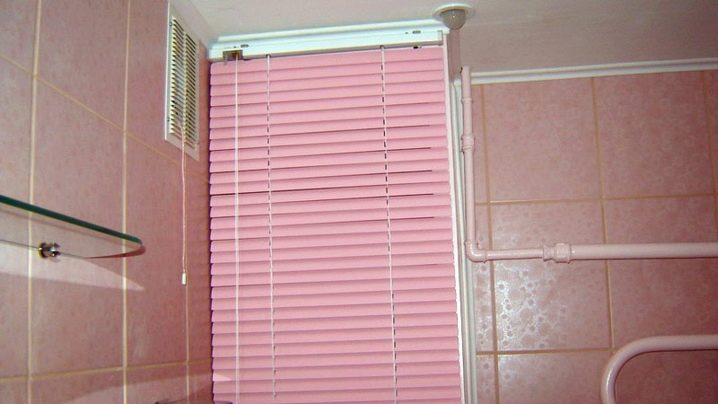
Roller shutters
A more reliable and solid way to hide pipes than blinds. They have a similar mechanism: when the structure is opened, the strips are collected in a roll or stack inside the box. They take up more space, but if there is enough space, it is better to give preference to this method of camouflage. Of particular interest are the automatic models controlled by the remote control.

Helpful tips from the pros
To avoid ridiculous mistakes, it is necessary to familiarize yourself with the practical recommendations of specialists.
Knowing the tricks of the masking process, you can hide the pipes beautifully, and such decorations will not affect the functionality of sanitary communications.
- If the water pipes are to be replaced before masking, it is better to plan the system so that it has a minimum of connections.
- Before decorating pipes, you should check the operation of the system.It is necessary to supply water to all plumbing fixtures and, after making sure that there is no leakage, you can start working.
- Condensation often forms on the pipes. Water accumulates in the most inaccessible places, and you have to constantly wipe it off. To avoid this trouble, pipes in the toilet should be sheathed with heat-insulating material.

- In apartment buildings, the communication system is interconnected. Problems with the pipeline in one apartment may affect neighbors. The speed of elimination of breakdowns is very important, therefore, access to the pipes must be free.
- Do not forget about access to metering devices. The readings will have to be taken monthly, the procedure should not cause discomfort.
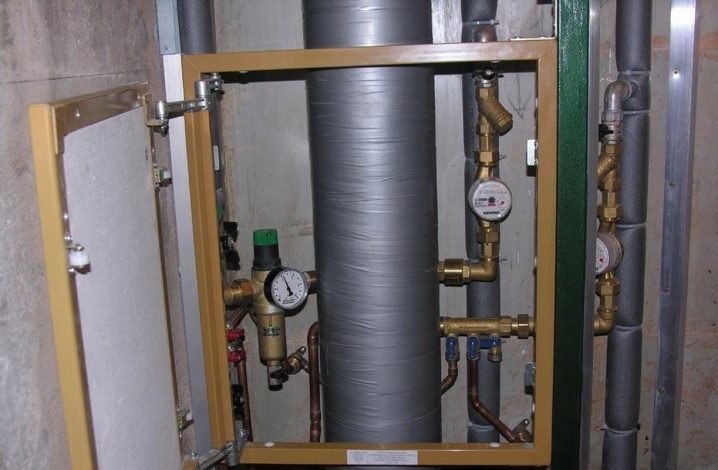
Knowing the types and features of structures with which it is possible to decorate pipes, it will be easy to choose an option that meets the desired requirements. And following practical advice, the chosen method will not prevent communications from functioning correctly.
For information on how to hide the bathroom in the toilet with your own hands, see the next video.













The comment was sent successfully.